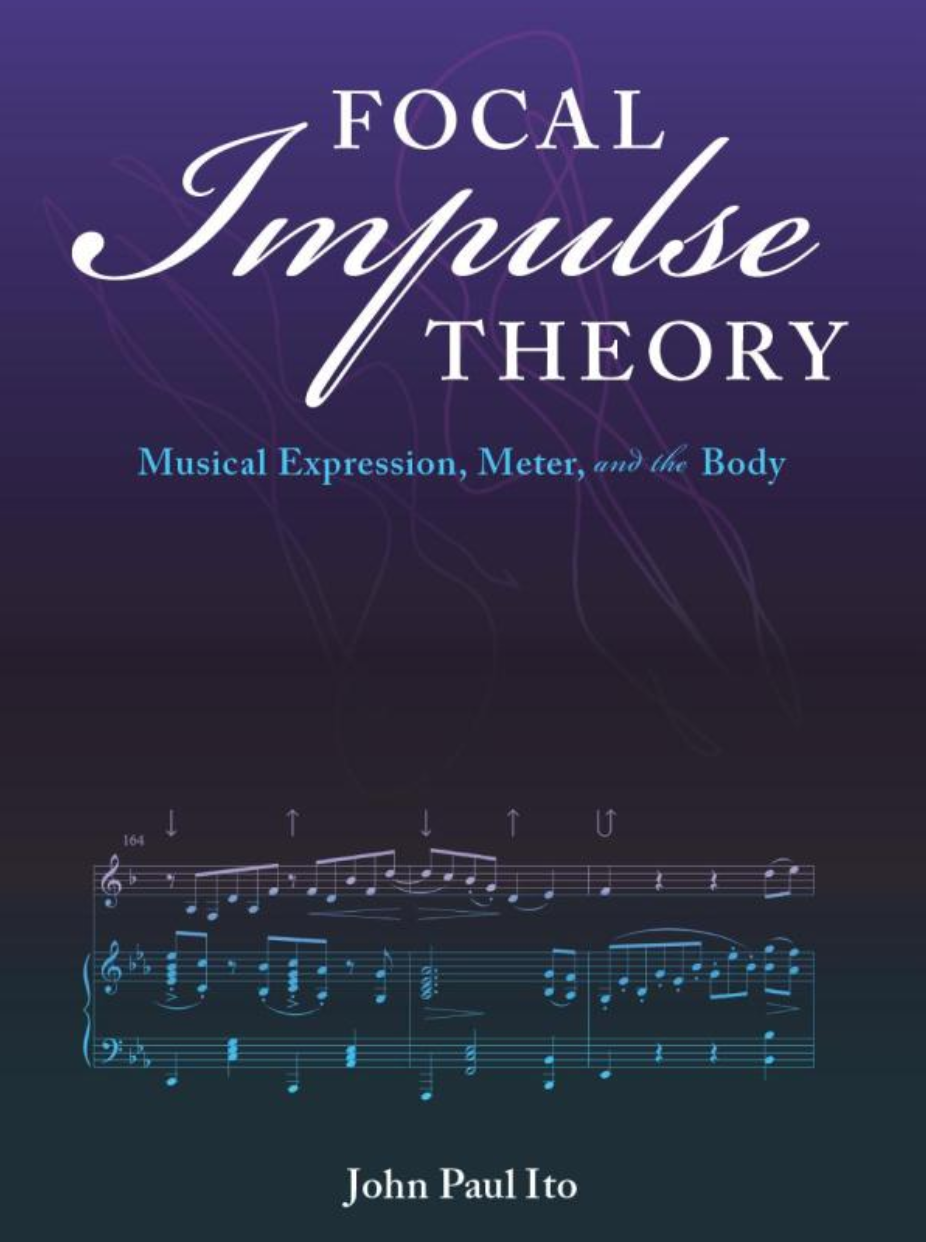Focal Impulse Theory: Musical Expression, Meter, and the Body. Indiana University Press, 2021, in the series Musical Meaning and Interpretation, edited by Robert S. Hatten.
“Hypermetrical Schemas, Metrical Orientation, and the Prototype Category,” 2013, Journal of Music Theory 57.1, 47-85.
“Repetition without Repetition: How Bernstein Illumines Motor Skill in Music Performance,” 2015, in Anticipation: Learning from the Past, ed. Mihai Nadin, Cognitive Systems Monographs, vol. 25, 257-268. Cham, Switzerland: Springer.
“Focal Impulses and Expressive Performance,” 2013, in Proceedings of the 9th International Symposium on Computer Music Modeling and Retrieval, ed. M. Aramaki et al., Lecture Notes in Computer Science, vol. 7900, 480-489. Berlin: Springer.
“Repetition without Repetition: Bernsteinian Perspectives on Motor Learning for Musicians”, 2013, College Music Symposium 51.
“Performing a Syncopated Hemiola and Its Cousin in Brahms,” Performance and Analysis Interest Group meeting, Society for Music Theory Annual Meeting, Columbus, OH, November 2019.
“Hierarchical Motor Organization in Violin Performance: An Initial Study,” with second author Heather L. Rusiewicz, Local Research Session, Eastman/University of Rochester/Cornell/Buffalo Music Cognition Symposium, Rochester, NY, April 2017.
“Cultural and Individual Particularity On the Canvas of the Metrical Hierarchy,” Making Time in Music, Oxford, United Kingdom, September 2016.
“Motor Organization of Violin Bowing: Meter, Temporal Hierarchy, and Connections with Speech,” presentation to the Latash Group, Department of Kinesiology, The Pennsylvania State University, April 2015.
“Performing Metrical Dissonance,” Society for Music Theory, Charlotte, NC, November 2013.
“Performing Metrical Dissonance,” Performance Studies Network Second International Conference, Cambridge, United Kingdom, April 2013.
“Repetition without Repetition: Bernsteinian Perspectives on Motor Learning for Musicians,” Convocation, School of Music, Carnegie Mellon University, October 2012.
“Focal Impulses and Expressive Performance,” 9th International Symposium on Computer Music Modeling and Retrieval, London, June 2012.
“Hypermetrical Analysis and Music-Theoretical and Linguistic Accounts of Cognition," Eastern Illinois University, February 2011.
“Hypermetrical Schemas, Conflicting Theories, and the Radial Category,” Indiana Theory Symposium, Bloomington, IN, February 2008.
“What Performing Musicians and Motor Control Scientists Can Learn from Each Other,” Science Hall Colloquium, Lawrence University, March 2006.
“A Theory of Motor Coordination in Performers of Common-Practice Music,” 8th International Conference on Music Perception and Cognition, Evanston, IL, August 2004.
“Performance, Perception, and the Experiential Commensurability of Musical Timescales,” University of Michigan, March 2004.
“A Theory of Motor Coordination in Musical Performance and Some Interpretive Applications,” Washington University in St. Louis, February 2004.
“The Coordination of Motor Behaviour in Performance as a Source of Musical Gesture,” International Conference on Music and Gesture, sponsored by the European Society for the Cognitive Sciences of Music, the Society for Music Analysis, and the Society for Education, Music, and Psychology Research, Norwich, United Kingdom, August 2003. Richard Ashley read this paper for me, a family emergency having prevented me from attending the conference.
“Impulse Structure in Tonal Music: Coordination of Motor Behavior and Sonic Consequences,” University of California at Santa Cruz, March 2003.
“Swinging Impulse Coordination as a Source for Swing Rhythms,” 6th International Conference on Music Perception and Cognition, Keele, United Kingdom, August 2000. The talk discussed aspects of a substantially longer paper, published under the same title on the CD-ROM Proceedings of the Sixth International Conference on Music Perception and Cognition ed. Chris Woods, Geoff B. Luck, Roger Brochard, Susan A. O’Neill, and John A. Sloboda (2000).
